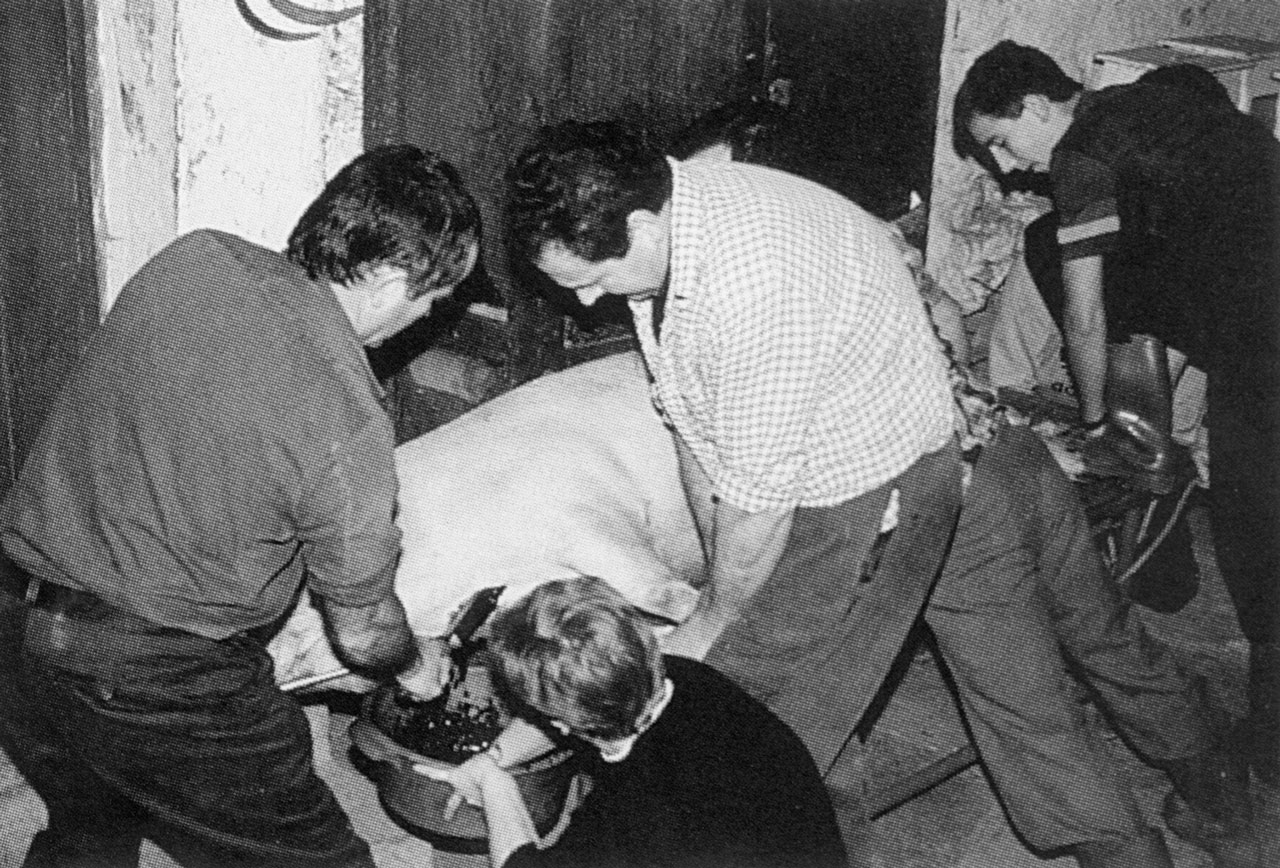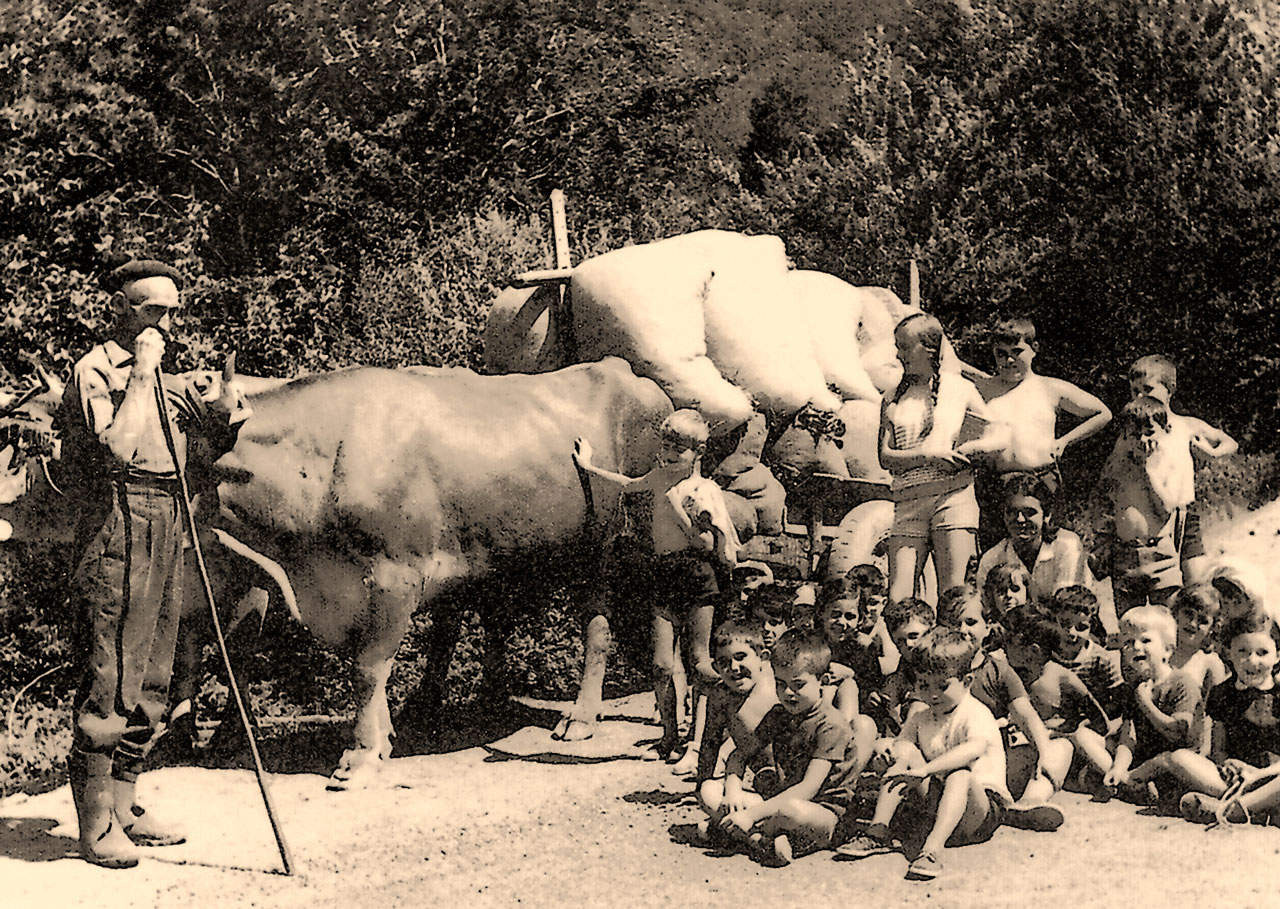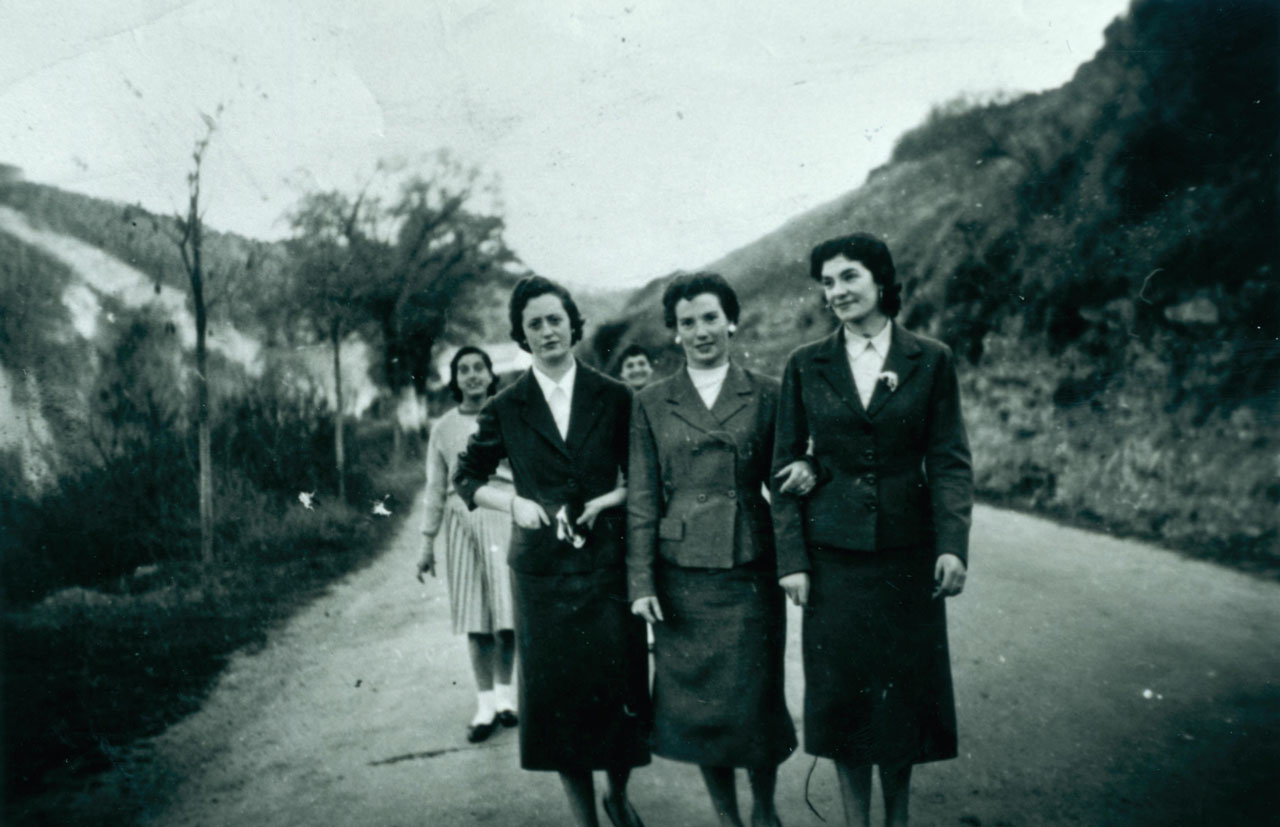Heir of the family. Zeanuri (B), c. 1920. Source: Labayru Fundazioa Photograhic Archive: Felipe Manterola Collection.
House and Family in the Basque Country


House and Family in the Basque Country
The widespread practice in the territories under charter law was for one of the children, either male or female, to continue with the family tradition of keeping up the farmstead and its belongings.
Family Diet in the Basque Country


Family Diet in the Basque Country
Odolosteak ordeaz. Neighbours and relatives are given black puddings and other pork cuts as a gift at pig slaughter time. It is an act of courtesy, an expression of the close bond shared with them, and part of an established exchange ritual.
Children’s Games in the Basque Country


Children’s Games in the Basque Country
Txori-ikasten They played looking for birds’ nests and thus learnt about their habits, their songs, the way the nests were built…
Traditional Medicine in the Basque Country


Traditional Medicine in the Basque Country
There is a hidden wisdom behind popular medicine that goes far beyond the remedy itself. This collection of data helps us catch a glimpse of a way to understand health and disease —and ultimately the human body— that differs from the prevailing view.
Ritos del nacimiento al matrimonio en Vasconia


Ritos del nacimiento al matrimonio en Vasconia
Neskazaharrak joaten dira Madalenara, santuari eskatzera senar on bana. Cancionero vasco
Ritos funerarios en Vasconia


Ritos funerarios en Vasconia
Existían caminos específicos por los que se llevaba el cuerpo del difunto desde la casa mortuoria hasta la iglesia y el cementerio.
Pastando en Eneabe. Zeanuri (B), 1996. Fuente: Archivo Fotográfico Labayru Fundazioa: José Ignacio García.
Ganaderia y pastoreo en Vasconia


Ganaderia y pastoreo en Vasconia
Hace dos milenios Plinio distinguía el Vasconum saltus, húmedo y boscoso, del Vasconum ager con sembrados de cereales y viñedos. Aquella distinción sigue vigente en lo que se refiere a la ganadería.
Agricultura en Vasconia


Agricultura en Vasconia
Hasta la década de los años 1950 el molino harinero era un elemento indispensable en la economía grícola-ganadera de nuestros pueblos.







